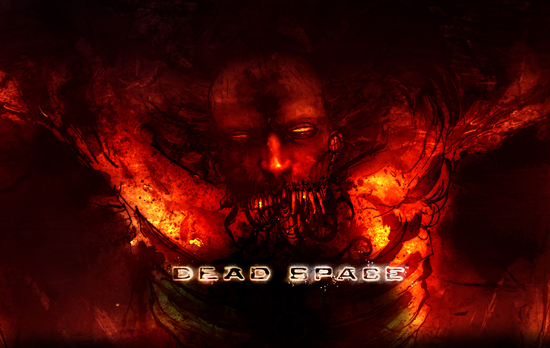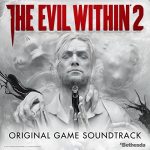Are you looking forward to Dead Space next week? We definitely are, as we’ve been excited about the title ever since the demo at Comic Con 2008. The demo area was hidden away in the corner of the EA booth, and the dim lighting and stereo headphones definitely drove home the game’s unreal sense of fear.
The sound design in this game is absolutely astounding, featuring an otherworldly blend of grotesque sound effects and expertly implemented musical moments to heighten the game’s ambiance. We’ve been able to speak with Don Veca, the audio director for Dead Space, about the massive undertaking of Dead Space’s audio. We touch on their general approach, the use of music in the game, and some of the unique tools the team created, including “Fear Emmitters” and “Deadscript” which make Dead Space one of the most impressive audio experiences we’ve had the pleasure of hearing.
Buckle up and hit the jump for our comprehensive interview regarding all topics audio in Dead Space.
OSV: Hello. Thanks for taking the time to speak with us today about the amazingly executed sound design in Dead Space. I wanted to start by asking about the game’s general sound direction. Was the plan always to emphasize the atmosphere through sound effects rather than music as other titles have in the past? Did this change over the course of game’s development?
Veca: The plan from the very start was to create mood through overall sound design. We weren’t going for traditional music composition or memorable themes, but instead approached the entire sound-scape as a single unit that would work together to create a dark and eerie vibe. This is not to say that we didn’t use music to help create the atmosphere, because we certainly did; however, the music was used much more texturally than thematically. In this way, Dead Space has really blurred the line between music and sound design. When you get right down to it, music is really just sound design with a lot more rules.
OSV: I imagine a pretty sizable team is working on the audio given the game’s attention to detail. Can you tell us a little about the members of the team, their credits, and perhaps their specialties and specific roles on Dead Space?
Veca: Considering the scope of the game, and especially the audio, we actually had a pretty lean audio team compared to other games I’ve worked on. Once we were in full production mode, the team consisted of an audio director, three sound designers, an intern from a local audio college (Ex’pression College for Digital Arts), a dialog implementation/localization contractor, and dialog supervisor who was shared with another project who organized and directed most of the human voice-over sessions. We also contracted a composer for our original score. Other than that, we outsourced very little additional audio content.
While a team of this size may seem reasonable for some projects, we could have used a few more bodies to support the lofty design and steep quality bar that we set for ourselves, especially toward the end of the development cycle. I can’t say enough about our three main sound designers, Dave Feise, Andrew Lackey, and David Swenson. All three of them totally rocked, and each brought their own unique perspective and strengths to the game. Dave Feise, the very first member of the Dead Space audio team, was our master weapon-smith and tweaky futuristic synth dude; he also has an enormous grasp of our overall game pipeline. Andy did some amazing work on our more linear scripted events (we really don’t have cut-scenes in this game), and he created some of the best sounding and most intimidating boss creature audio that I’ve ever heard. Dave Swenson is pretty much a Swiss Army Knife when it comes to sound design, doing great work on everything from creatures, to ambis, to physics impacts.
In addition to my role as audio director, I made an effort to stay in the trenches as much as I could for this game (because I didn’t want to miss out on the fun), covering the music implementation, creature vocalizations, ambiences, and whatever I could fit in. We all had our hands in the creepy atmospheric design of the game. We didn’t have a ton of human voice-over in Dead Space, but there was enough to keep Andrea Plastas, our dialog supervisor, and Jason Heffel, our VO implementation guy, up to their eyeballs in verbiage. The VO audio from our motion captured sessions added a lot of realism, not to mention the audio-log and video-log work, which is a crucial aspect of story communication. On this note, a special thanks has to go out to Bill Rudolf, who did the editing/mixing (at the last minute) for our Video Logs. And oh yeah… thank God for interns! Marcus Egan (earlier in the project) and Chris Chikes (toward the end) were our hard-core implementation work-horses, and valued members of the audio team.
OSV: What role does music play in Dead Space? We’ve been told that composer Rod Abernethy composed some music for the game, but in all the demos I’ve seen, I hear mainly grotesque sounds from the creatures and environments and not so much in terms of traditional music.
Veca: The music credits read “Music Composed and Conducted by Jason Graves in Association With Rod Abernethy.” Early on, Rod helped out logistically and was involved in our initial brainstorming, but Jason actually composed, conducted, and arranged all the music. But once again, we didn’t set out to compose a traditional music score; we were going for textures and mood. In the final carnation of the game, the music plays a huge role in the overall soundscape; it’s the drama behind everything. It’s sometimes very subtle, but can at a moment’s notice move seamlessly into a blaring dissonant cacophony, supporting the action and drama of the game play.
OSV: What were some of the tools the team used to create and record these sounds? Were some of them borrowed from sound libraries, or were they created by Foley artists?
Veca: We really didn’t use much in the way of sound libraries for this game. We recorded most of the raw source audio ourselves, in all kinds of crazy places. We used professional Foley artists as well, but to a lesser extent. We used tons of boutique audio processing plugins for just about everything, as well as traditional analog synthesizers, funky outboard gear, and synth instrument plugins for the more futuristic sounds.
OSV: This is a game that has a ton of sound despite there not being much in terms of music as previously mentioned. Any idea how many minutes of sounds were recorded for the game?
Veca: Once again, we shipped with quite a bit of music in this game as well as sound effects; it may be that the non-traditional use of the music makes it stand out less as music, and more as ambience, but believe me, it’s there. In fact, the music is played back as four layered stereo streams, driven by a custom music playback system that mixes the four layers based on the current state of the game, and how much “fear” is being emitted in the game by the various creatures or other “fear emitters” (more on that later). As far as how many minutes of sounds were recorded for the game – I couldn’t even guess. I can say that we spent a lot of time in our on-campus recording studio, in LA Foley studios, and in many strange places with portable recording gear (e.g., inside dumpsters or standing between two light-rail cars traveling at 80mph under the San Francisco bay). It’s also amazing how much great source audio you can actually record just sitting at your desk if you’re careful how you use it. We also made a huge effort to optimize the hell out of our RAM-based audio to fit in that little tiny space they call an “audio budget.”
OSV: So far we have seen some very unique engineering tools such as the Plasma Gun and the Line Gun that have converted into make-shift weapons that Isaac will be using to fend off the hideous necromorphs. Were there any new “out of the box” methods used to create sounds for some of the in-game technology and weaponry?
Veca: As I mentioned before, Dave Feise was our lead weapon sound designer. Dave used a lot of different techniques, including some traditional source audio, but I think what made the weapons sound unique was his use of analog synthesizers and other out-board gear (e.g., his minimoog, outboard filters, flangers, etc.). While this gear was originally designed for making music, it’s amazing how much pure sound design can be done with them as well.
OSV: It looks like you guys had a lot of fun recording this material, and it’s unlikely all of it will be making its way into the final build of the game. Have you considered using any of this material for other titles or even creating a sound library for other developers to use?
Veca: Yeah… sure… one day. (smiles)
OSV: Tell us about the game’s interactive audio system and how sound will be shaping the gaming experience when players pick up Dead Space next week.
Veca: There are a few different aspects to the interactive/adaptive nature of the Dead Space sound system.
Fear Emitters
One of the first questions that we asked ourselves was, “How can we make the music ‘build up to the boo’ like they do in linear horror movies?” That is, a key dramatic technique in classic horror movies is the gradual build-up of tension through music, but often with ambience and sound effects as well, and we needed a way to simulate this in an interactive videogame context. This is pretty straight-forward for linear media where the composer/sound designer knows exactly what is going to happen, when and how long, exactly, the build-up should take, and exactly when to play the big “boo!” stinger. This is not the case, however, for interactive media; the video game player is the one that determines how the scene plays out. It occurred to me that the “reason” the music swells in horror movies is because things are getting “scarier”; that is, the amount of “fear” that the movie is attempting to evoke is always increasing or decreasing throughout the entire production. It’s the composer/sound designer’s job to support and emphasize this emotional flow with the appropriate audio. So it occurred to me that we already have the ability to emit point-source or global sound and light in our game, for instance, and all we needed was a way to emit fear. This was the birth of the game “fear emitter,” which is simply a first-class game object that designers can place in the world or attach to other objects, most notably, the enemy alien creatures. Fear emitters are simply a “sphere of influence.” However, with this one tool, we can affect a myriad of audio sources, such as music, streamed ambience, adaptive ambience, reverb control, general mixing parameters, or whatever. But… of course, the devil’s in the details.
Creepy Ambi Patch
In addition to controlling the multi-track music mix during game-play, fear emitters also influence what we christened “The Creepy Ambi Patch.” This audio system (or patch) manages a dynamically-loaded set of 3D RAM-based audio samples. The idea here is that one thing many horror movies have that other genres don’t is lots of “in your head” sounds – point-source ambient sounds that are not so “real” but are instead “imaginary” and sound “scary.” These types of sounds tend to swirl in and around the listener – in Dolby Digital surround – in a pseudo-random way, heavily influenced by the numerous fear emitters in the world.
Visual Effects
In all the games I’ve worked on in the past, we would simply attach a sound (or set of sounds) to a visual effect, and the sound would automatically be triggered when the visual effect started. For the extremely dynamic and futuristic-looking VFX, however, we needed more than that. We wanted to be able to change the sound dynamically to mirror and support the way in which the VFX might be changing over time. To achieve this, we were able to integrate our very powerful audio scripting system into the VFX authoring framework, and modify our sounds over time based on the various dynamic parameters of the VFX. The result is an extremely tight integration and synchronization of visual effects and sound effects.
Deadscript
I’ve alluded a few times already to our audio scripting language, but I really need to stress how much power this new custom system gave us for all areas of sound in Dead Space – from music, to visual effects, to mixing parameters. We started off using the Max/Pd-like visual audio “programming language” that we developed at EARS (and that was adopted by Spore), but we found that, for console systems at least, the CPU usage it required was simply not feasible. Instead, we extended a very “C-like” scripting language that was already part of our core game engine specifically for audio control. Deadscript was at the core of everything; we, the sound designers, were able to create our own interactive/adaptive systems with relatively little support from software engineers. I believe that this system was key in creating the overall “Dead Space Signature Sound.”
OSV: I seem to recall from a previous interview that there was this specific room in Dead Space that made use of a recording of a subway route in San Francisco (B.A.R.T. we assume). How do you guys come up with this idea, and what made you decide to make a room with such a horrible sound?
Veca: When I first joined the team, we were still in “brain-storm/experimentation mode.” I wanted to spend a good amount of time just “messing around” and trying weird, out-of-the-box techniques. After all, this is futuristic sci-fi, so there are really “no rules” (which often times means “WTF am I going to do!?”). Getting back to the BART train idea, I have lived in the San Francisco Bay Area most of my life, and was in high-school around the time that the “Bay Area Rapid Transit” (BART) system was built, which in one section literally tunnels underneath the San Francisco Bay. I’m not sure why, but for some reason the tracks really scream down there… but in a very “scary” way – lots of high, screechy over-tones, big bottom end, and very dynamic. In later years as a sound designer at EA, I started thinking that this sound would be perfect for a game, but I didn’t know what game or where. Fast-forward to Dead Space – the perfect place for it. The sound we actually used in the game was recorded in the tunnel while standing between two cars (where it says “Do Not Stand Between Cars”). I didn’t really know where in the game to put it, but in our early demo there was a very inconspicuous room right after the first “zero gravity/zero air” moment that seemed to have no purpose. Since the Horror genre is also known for its heavy use of contrast, audio-wise, it seemed to be the perfect place to use this sound. When you open the air-vac door from the virtually silent “zero G moment” into this next room that has air (and therefore sound), you immediately get this deafening, screechy, scraping, pseudo-mechanical ambient roar. The art team jumped on this, and turned that room into a dark but strobing visual environment to match the audio. It was pretty cool.
OSV: I’m going to put you guys on the spot and say that Silent Hill: Homecoming features surround sound mixed in 7.1 on the PlayStation 3. What are some of the technical specs of the sound engine in Dead Space?
Veca: There are a lot of different places you can spend your tech dollars, and surround mixing is an extremely important area in which to invest; but, there are many places to spend your money, and we made a huge effort to accurately calculate the “coolness to expensive” bang-for-the-buck ratio. By “expensive,” I mean the amount of engineering hours and system resources a feature requires. For instance, while our low-level audio system supports 7.1 mixing, the extra CPU it requires outweighs its coolness factor. If it were “for free,” then we could easily add it as an option; but in my opinion, 7.1 is currently only worth the hype it generates, which currently isn’t enough considering the number of gamers that actually have a 7.1 system, plus all the other places we could spend our CPU dollars. Dolby Digital 5.1 sounds fantastic as it is, and is still by far the most widely used home-theater configuration. I chose instead to spend my CPU on multi-channel music streaming (four separate stereo layers, dynamically mixed at run-time), four-channel (quad) ambience streams, dynamic RAM-based surround ambiences, occasional huge quad streamed sound effects, all of which are crossfadeable. The streaming architecture alone can yield some seriously awesome audio. I also preferred to invest heavily in the very high degree interactive/adaptive audio control and fast update rates that we gained from our Deadscript system. To me, this stuff is the meat; 7.1 is the spaghetti (and when it comes to game audio, I ain’t no vegetarian!).
OSV: Does the team have any final comments for gamers who are looking forward to Dead Space and will be playing through it next week? Any warnings, disclaimers, or even tips on how to best appreciate the game’s sound design?
Veca: Aside from the usual suggestions of playing the game late at night, alone, in the dark, a couple things come to mind:
First off, the audio in this game was designed for a decent home theater system. I figure that the people that really care about audio will have invested in one. It sounds fine in stereo, but the audio design of Dead Space takes every advantage of 5.1, from positionally swirling surround, to environmental emersion (yes, you can’t have decent article on game sound without using the word “emersion” at least once), to floor-rattling, sub-woofer-pumping lows.
Secondly, and this is more for aural entertainment than a game-play tip, it’s really fun to run away from the bad guys instead of killing them all the time. Sure, it’s very satisfying to blast the hell out of the enemies; but just for fun, try a different approach some times: avoid the enemy, hide, try to get around them without killing them. It’s a completely different experience, and it kicks the interactive/adaptive audio system into high gear.
Tags: Dead Space, EA, FPS, Horror, Interviews, Sound Design, Survival Horror









































[…] post by Original Sound Version […]
love the title of this article.
I came up with it, and even I think it’s terrible.
Well deserve this!
Awesome interview. Makes my current work on digital signal processing seem so much more interesting… I wonder if it’s too late to switch to a sound-focused computer engineer? ^_^
By the way, I blame this game entirely for the nightmare I had last night. I wasn’t even playing it, my roommate was and I just watched for half an hour. o.O
[…] for Best Multiplayer. A thoroughly enjoyable, zombie survival themed shoot’em up, that plunges you into 4 different Hollywood film style scenarios, it also includes the option to play as a zombie, where you have to try to stop the humans from reaching the safe house at the end of the levels. Also, pleased to see EA’s Dead Space, one of the most disturbing games ever made, was rewarded for its fantastic audio. There’s a great interview with the audio director Don Veca here on Original Sound Version. […]
[…] Otherwise, well deserved wins for Left 4 Dead and Dead Space. Left 4 Dead (an Electronic Arts production) received the Award for Best Multiplayer. A thoroughly enjoyable, zombie survival themed shoot’em up, that plunges you into 4 different Hollywood film style scenarios, it also includes the option to play as a zombie, where you have to try to stop the humans from reaching the safe house at the end of the levels. Also, pleased to see EA’s Dead Space, one of the most disturbing games ever made, was rewarded for its fantastic audio. There’s a great interview with the audio director Don Veca here on Original Sound Version. […]
[…] is an interview with Don Veca at Original Sound Version (OSV). It’s […]
[…] still shocked that Dead Space is coming to the Wii. Last year we had a lengthy and interesting chat with Don Veca, Audio Director for the original Dead Space, which turned up all sorts of information […]
[…] application to VFS I talked quite a bit about my recent aural influences, ranging from Jacaszek to Dead Space to Radiolab* to No Country for Old Men. We also were encouraged to send in clips of our previous […]
[…] For more information on the amazing sound, check out this interview with Dead Space’s audio director to find out more about what went into making the game sound so great. http://www.originalsoundversion.com/?p=693 […]